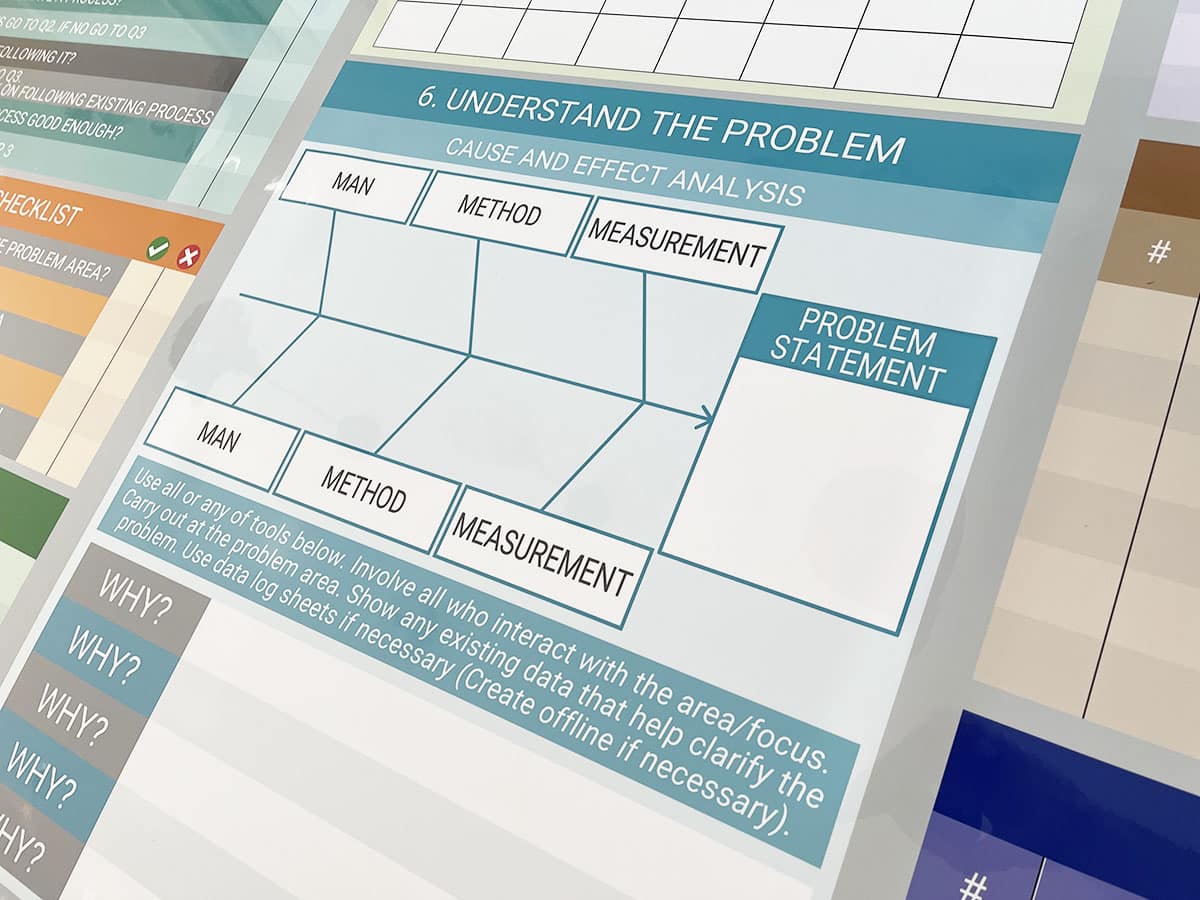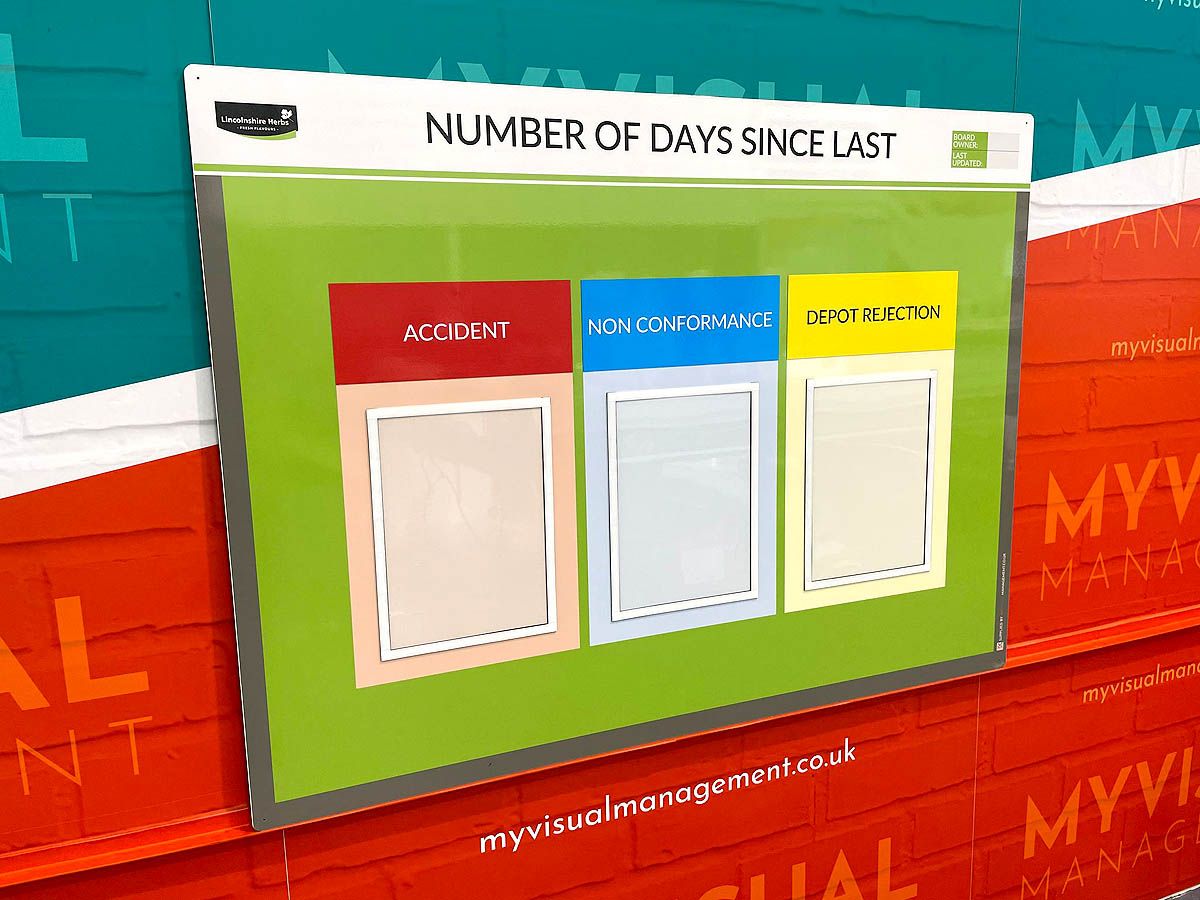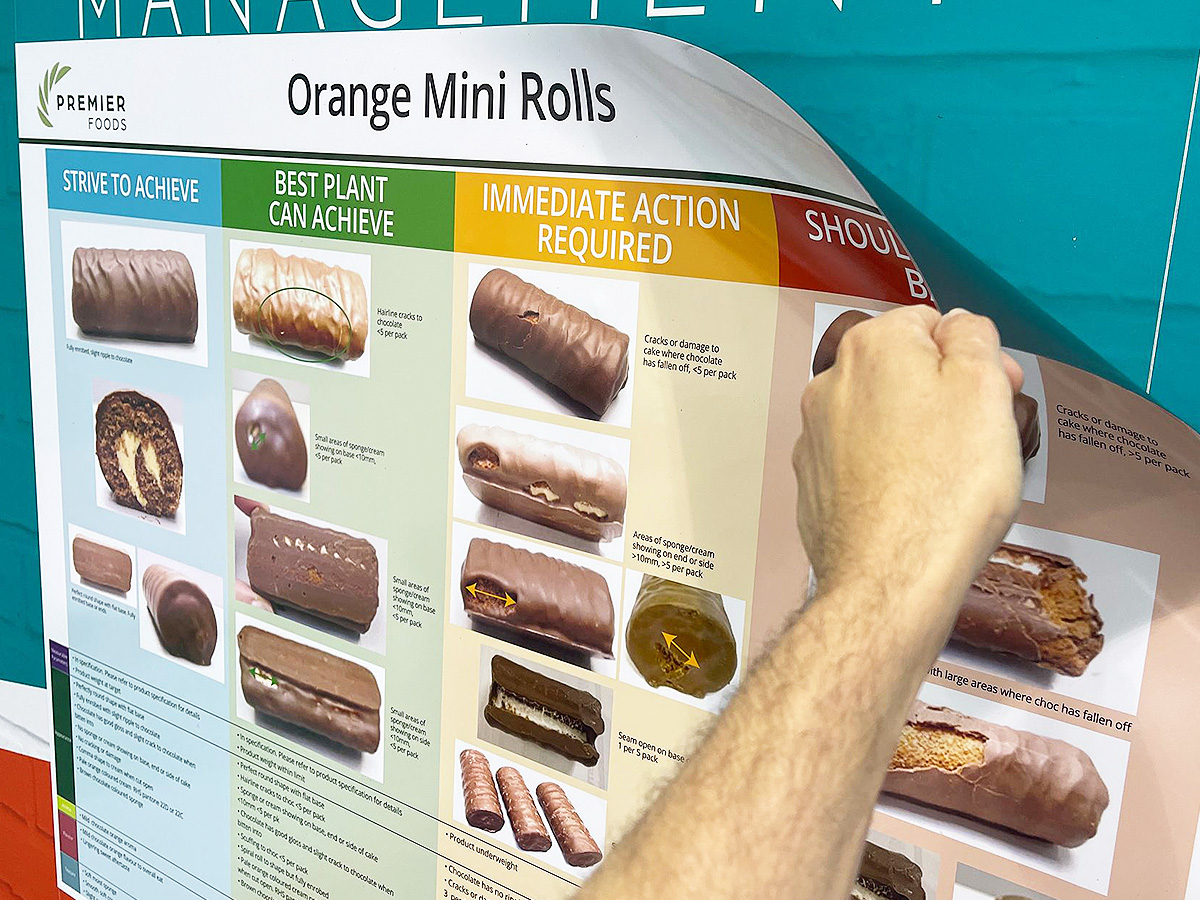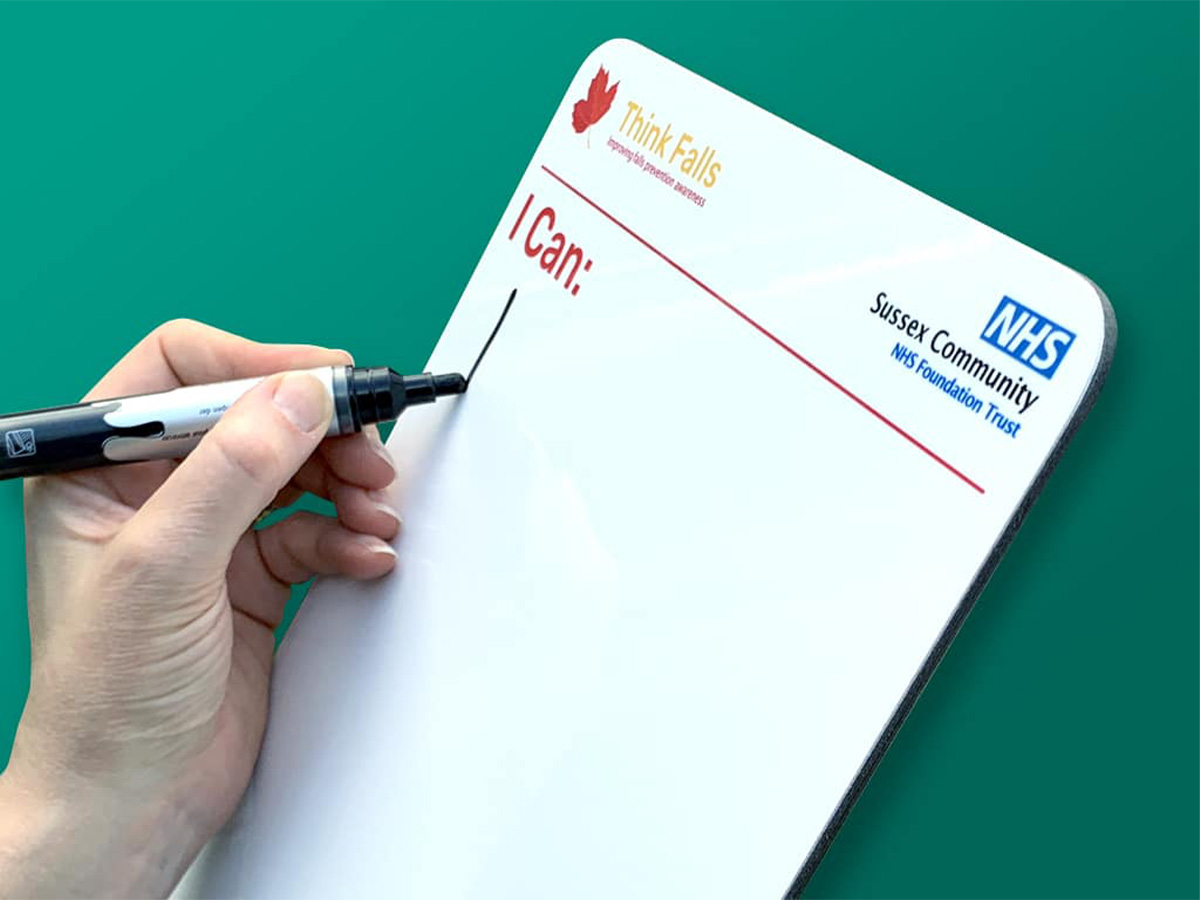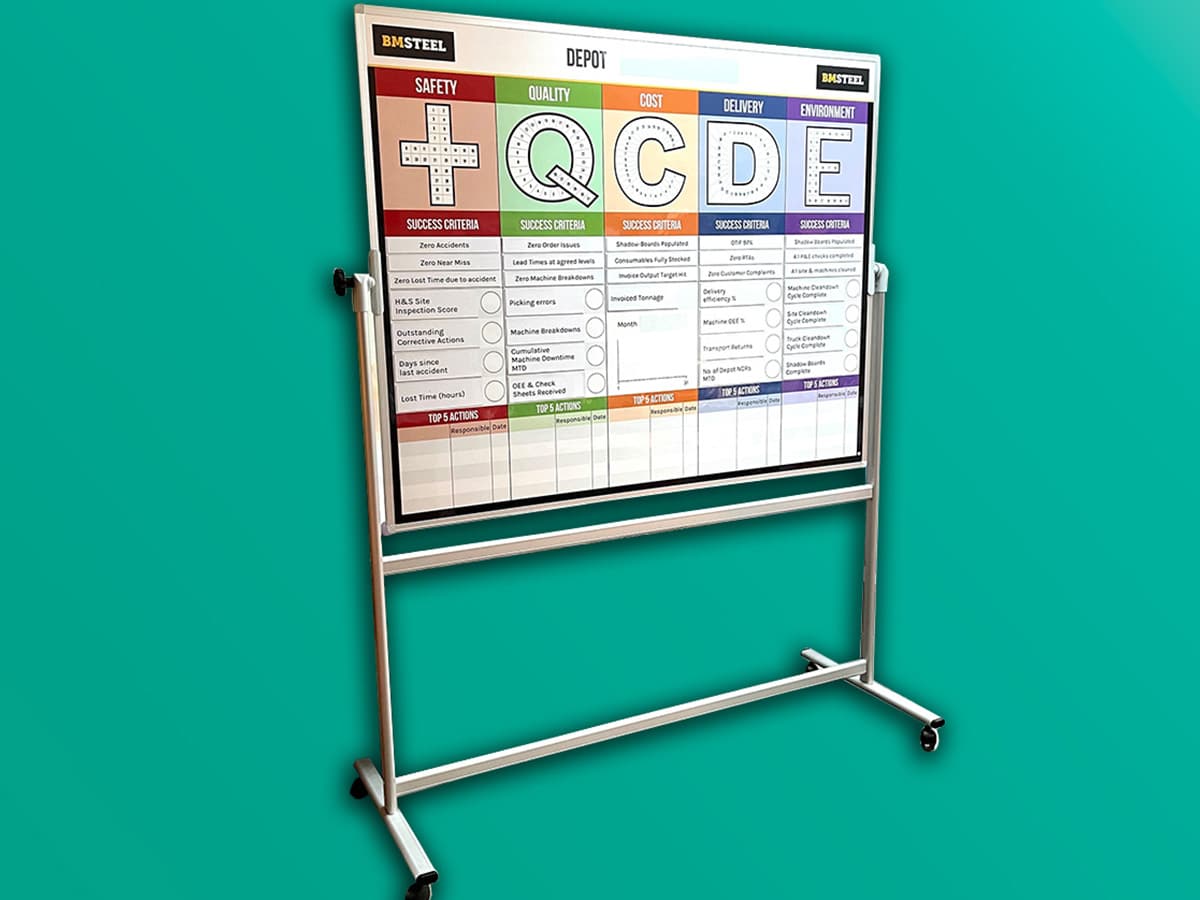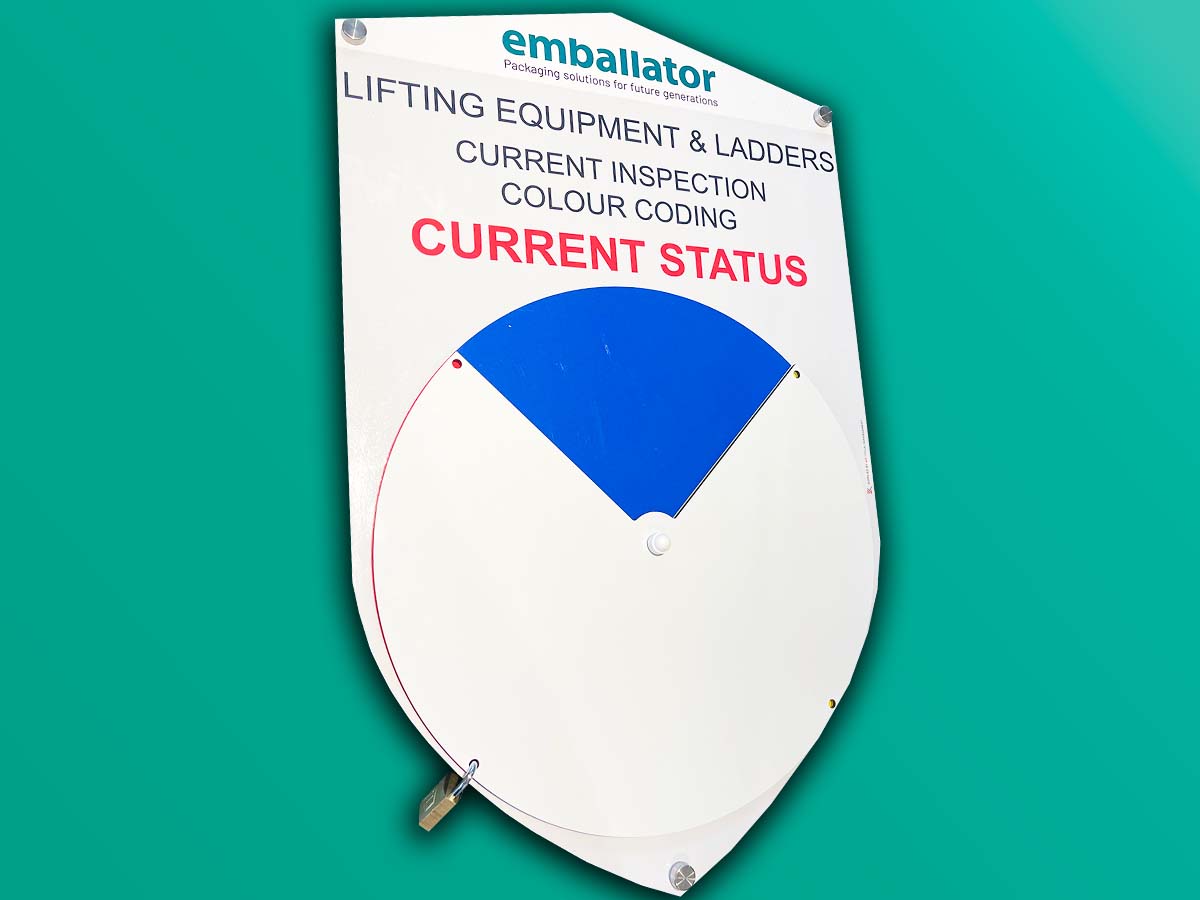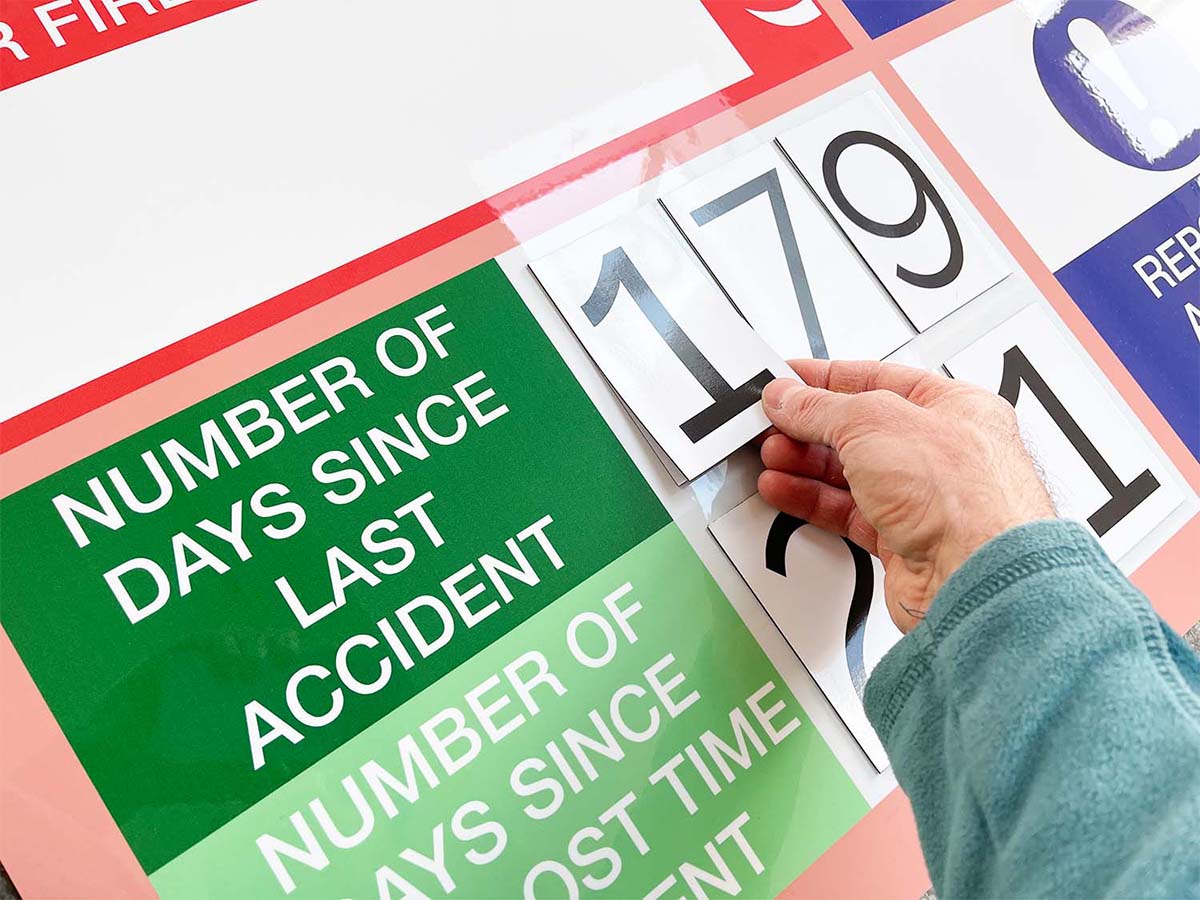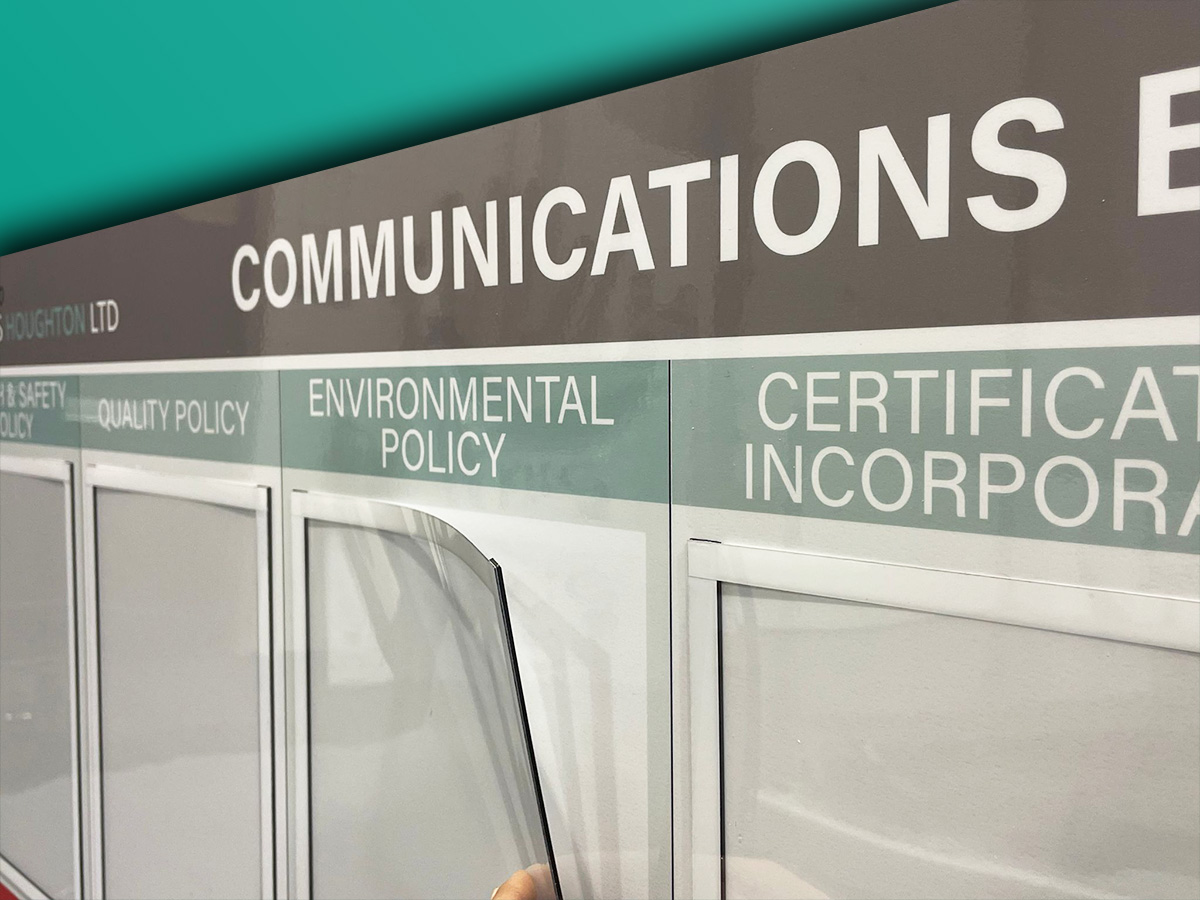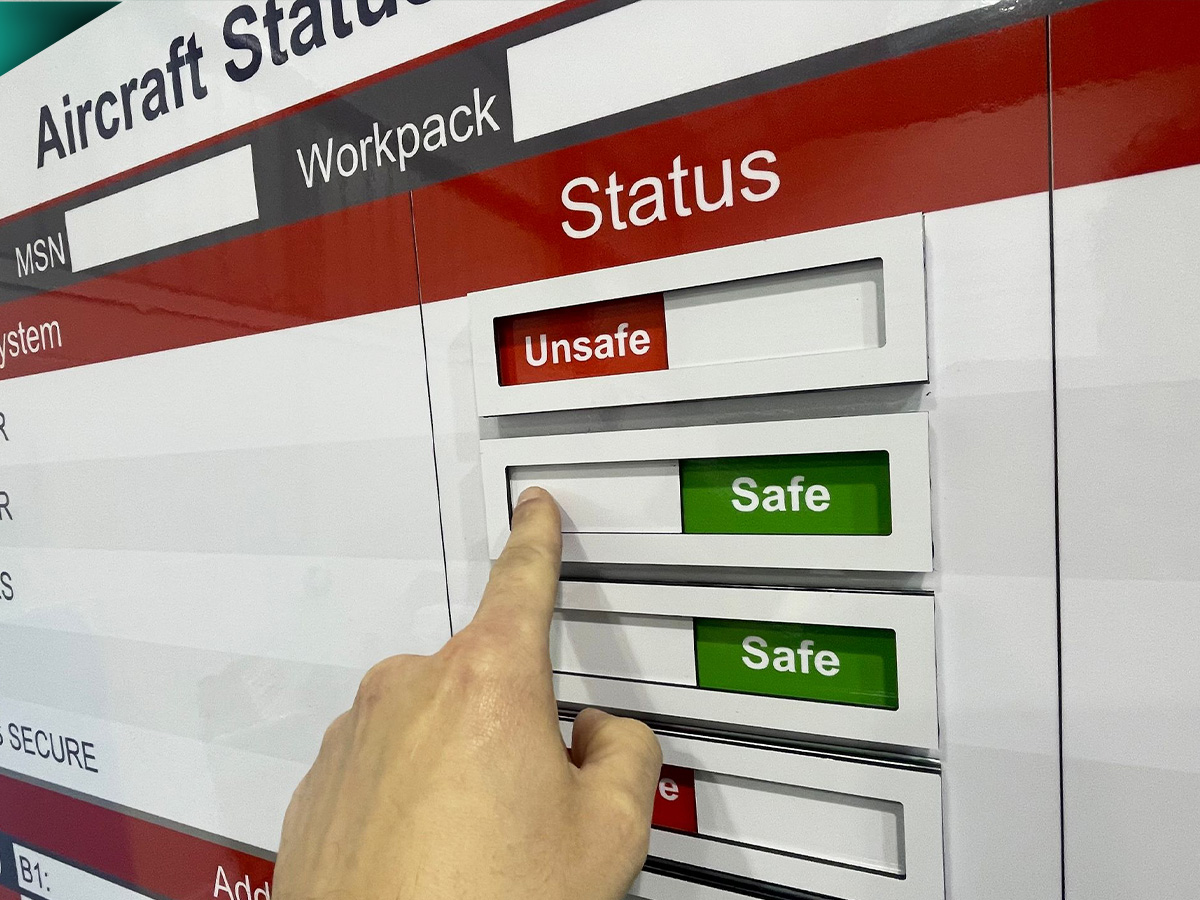
Identify your problems and display countermeasures for success
How Practical Problem Solving boards work
Use your Practical Problem Solving or PPS board in a number of ways. Firstly, for example, identify and show the problem. Secondly, categorise the issues in a visual way. Perhaps, for example, using the 4M method. This, for instance, defines categories as: Material, Method, Machine, Man.
Meanwhile, analyse underlying cause(s) of problems. Furthermore, come up with countermeasures and share them on your PPS board. Subsequently, put those countermeasures into action. After that, assess targets and evaluate results. Use visual board accessories to do this in a highly visual way. Finally, use findings to learn, and move forward….
Why Practical Problem Solving boards work
Use your PPS board to clearly show your practical problem solving process. Furthermore, break the steps of your process down in a visual way. In addition, make sure no part of the process is overlooked. Therefore, maintain a rigorous, standardised method for practical problem solving. Likewise, give your team an instant point of reference for tackling problems.
Most importantly, Practical Problem Solving boards support each step of your own problem solving process. Likewise, this, in turn, supports Continuous Improvement. Above all, your PPS board offers the most relevant information about your process in an instantly accessible way. In addition, it is a visual way of working together to solve problems.

Break down Continuous Improvement into steps to ensure success

Break your issue into visual stages with a Fishbone board

Break your issue into visual stages with a Fishbone board
Fishbone diagram practical problem solving board
This type of board is a highly effective means understanding and analysing issues as a team. In other words, use the diagram to help you work out what the root causes of a problem might be. Consequently, break the issue down into stages. Therefore, define the problem in detail considering every step of your process. As a result, find the contributing sources for faults or defects. For example, the 5Ps fits well into the fishbone diagram. It explores any of a number of relevant Ps. Firstly, for example, Personnel of People. Secondly, Process or Procedure. Furthermore, Plant, Premises or Programme. In addition, Product. Finally, Paperwork.
Therefore, use your fishbone diagram problem solving board so you can successfully work through issues. Furthermore, in an orderly and visual way. Above all, this visual process for problem solving brings the team together to resolve issues.
In short, the fishbone diagram visual board works because it delivers this visual tool in a visual way. Furthermore, it is quick and easy to update. In other words, it is dry wipe and magnetic. Therefore, it works with board accessories. As a result, add the functions you need.
Other types of practical problem solving boards
Above all, we support you to translate any of the following practical problem solving methods on to a functioning visual management board. For example, use the 4M model (Man, Method, Machine, Material) to formulate a problem statement. Similarly, the 5 WHY approach enables you to successfully identify root causes. Furthermore, to come up with and initiate countermeasures. Meanwhile the 5W 1H seeks not only to understand Why, but also How a problem exists.Most importantly, use our custom options to make your board your own. Furthermore, add further functions using our Board Accessories.

Formulate a problem statement with the 5 Why approach

Root Cause Analysis
Root Cause Analysis Boards
Root Cause Analysis (RCA) is a structured problem solving method which aims to identify and solve the related issues of a particular problem, and to provide potential solutions. It is usually made up of five steps: gather data, produce a problem statement, analyse cause and effect, provide solutions and report on process. So, the RCA process assumes that events and systems are interrelated so that an action in one area will have an effect on another area, and so on. Consequently, this sometimes reveals more than one root cause. See more Root Cause Analysis boards.
Further ideas: Problem Follow Up Boards
In addition to PPS board, you may also like Problem Follow Up (PFU) Boards. The PFU Board is more than just a visual display. Certainly, it stands out and grabs attention. However, it also facilitates A Problem Follow Up system. This works because of the ease to make updates. In other words, write up the problem, log the cause and share the countermeasure. Likewise, assign responsibility for resolving problems.

A PFU board example
Examples of our Practical Problem Solving Boards
You May Also Like
Our Approach
We create visual management boards everyday. As a result we have plenty of experience. We work for organisations in food production, the power industry, national rail, pharmaceuticals, education, healthcare, packaging and distribution.
Our team works with a simple idea or sketch and creates a professionally designed layout. This is then turned into a highly functional visual management board.
We offer customised options because we want to create the perfect board for you. So, here are a few examples. We can add magnetic areas or a dry-wipe finish (for use with whiteboard pens). Furthermore, you can choose Red/Green sliders or R.A.G. (Red, Amber, Green) status dials so you can quickly and visually update your board. These are just a few examples of the ways in which our boards can be tailored to meet your needs. You may also be interested in whiteboard overlays that can be used on top of an existing magnetic board.




















































